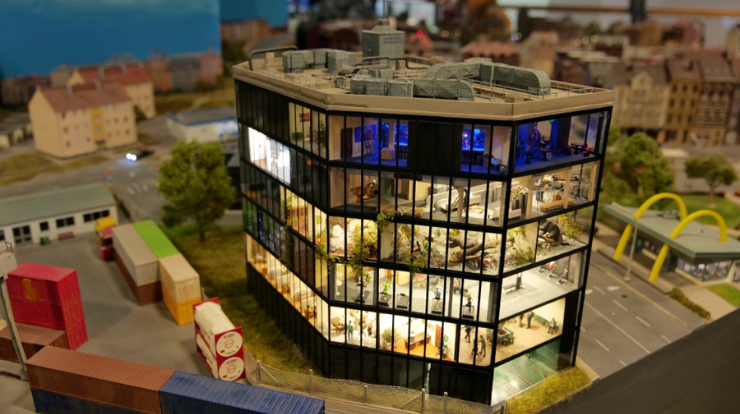Dubai’s construction landscape is diverse, with projects ranging from luxurious residential developments to sprawling commercial complexes. Conceptual model making is a crucial part of both types of projects, but the approach can differ significantly between residential and commercial designs.
The unique requirements of each sector influence the materials, design elements, and objectives of the conceptual models. This article explores the key differences in conceptual model making Dubai for residential and commercial projects, highlighting how each is tailored to meet specific needs.
1. Scale and Scope of the Models
Residential Projects: For residential projects, especially in Dubai’s luxury real estate market, the scale of the conceptual models is often smaller and more intimate.
These models are typically used to showcase individual homes, apartment units, or small clusters of residences. They focus on the details that matter to prospective homeowners, such as room layouts, exterior designs, and landscaping features.
Commercial Projects: In contrast, commercial projects like office towers, shopping malls, or mixed-use developments are larger in scope.
Conceptual models for these projects are designed to reflect the full scale of the development, often including surrounding infrastructure like roads, parking lots, and public spaces. These models need to highlight how the commercial project interacts with the broader urban environment and accommodates large numbers of people.
2. Focus on Aesthetics vs. Functionality
Residential Projects: Aesthetic appeal is a major consideration in residential conceptual models. In Dubai, where high-end living spaces are in high demand, the visual design of a residential building can be a deciding factor for buyers.
These models often showcase intricate details like facade finishes, window designs, and landscaped gardens. Homebuyers want to see how the residence will look, both inside and out, and the model needs to convey a sense of luxury and comfort.
Commercial Projects: Commercial conceptual models focus more on functionality and efficiency. While aesthetics are important, especially for high-profile office buildings or retail centers, the primary goal is to demonstrate how the space will serve its intended purpose.
For example, models of office buildings might emphasize floor layouts, accessibility, and space utilization. For retail spaces, the model might highlight pedestrian flow and ease of navigation. The key focus is to show how the building meets the needs of businesses and customers.
3. Client and Stakeholder Expectations
Residential Projects: The audience for residential conceptual models typically includes individual buyers, investors, or small development groups. These clients are primarily concerned with personal experience, comfort, and design appeal.
The model needs to reflect the lifestyle the property offers, focusing on high-end finishes, spacious layouts, and personalized features. Developers often use these models in marketing campaigns to attract buyers by offering a tangible vision of their future home.
Commercial Projects: For commercial projects, the stakeholders are more likely to be large corporations, business owners, or government entities. These clients prioritize the functionality, return on investment, and compliance with regulations.
A commercial conceptual model is used to show how the project will support business activities, meet safety standards, and optimize space for tenants. For instance, a hotel model would focus on the flow of guests, while a shopping mall model might highlight storefront visibility and customer access.
4. Materials Used in the Models
Residential Projects: Residential conceptual models often use materials that emphasize the beauty of the design. For instance, textured materials may be used to replicate natural stone, wood, or glass, creating a more realistic representation of the home. These models might include small details like furniture or lighting to give potential buyers a sense of how the interior will look once completed.
Commercial Projects: For commercial conceptual models, the focus is less on decorative details and more on structural components. Materials like foam, plastic, or 3D-printed parts are often used to create large-scale models that focus on the layout, zoning, and utility of the space. These models may not need to include intricate details like interior decor but will emphasize the building’s dimensions, traffic flow, and infrastructure.
5. Design Complexity
Residential Projects: The design complexity in residential conceptual models is often more focused on customization and personalization. Dubai’s luxury market caters to buyers who seek unique and high-end living spaces. As a result, residential models may include custom features such as infinity pools, rooftop gardens, or private gyms. The complexity lies in creating a model that highlights these unique selling points and differentiates the property from other offerings.
Commercial Projects: Commercial models tend to have more technical complexity, particularly for large-scale developments like hotels, office buildings, or shopping centers. The model needs to reflect detailed technical aspects such as HVAC systems, fire escapes, and loading docks.
Commercial projects must adhere to strict building codes and safety regulations, and the conceptual model needs to account for these considerations. For instance, a hotel model must show how the layout supports operational flow, guest privacy, and emergency evacuation routes.
6. Integration with the Surrounding Environment
Residential Projects: In residential conceptual models, the surrounding environment is often depicted to emphasize privacy, tranquility, and luxury. This is particularly important in Dubai, where many residential developments are positioned near beaches, golf courses, or parks. The model may include nearby amenities like swimming pools, gardens, and pathways, helping potential buyers visualize a peaceful and luxurious lifestyle.
Commercial Projects: For commercial models, the emphasis is on how the project integrates with the urban landscape and supports the local economy. For example, a conceptual model for a shopping mall in Dubai might include adjacent roads, public transportation access, and nearby commercial establishments. The goal is to show how the project fits within the broader context of the city and how it will attract foot traffic and business activity.
7. Use of Digital Tools and 3D Printing
Residential Projects: In recent years, residential conceptual model making has increasingly incorporated digital tools like 3D printing and virtual reality (VR). These technologies allow for greater customization and detail, giving potential buyers an immersive experience of their future home. In Dubai, where luxury homes are often customized to meet the specific preferences of buyers, 3D-printed models can showcase unique features with remarkable precision.
Commercial Projects: For commercial projects, 3D printing and digital tools are used to create large-scale models with a focus on efficiency and functionality. VR is particularly useful in helping stakeholders “walk through” large commercial spaces like hotels or office buildings before construction even begins. These tools help identify potential design flaws early on, allowing for timely revisions.
Conclusion
The differences in conceptual model making for residential and commercial projects in Dubai reflect the distinct needs of each sector. While residential models focus on aesthetics, personalization, and luxury, commercial models prioritize functionality, scalability, and urban integration.
Both types of models play a critical role in ensuring the success of Dubai’s ambitious construction projects, offering valuable insights for developers, investors, and clients alike. As technology advances, conceptual model making will continue to evolve, further enhancing Dubai’s iconic skyline.
Stay tuned for more news and updates on Infinite Insight Hub!



